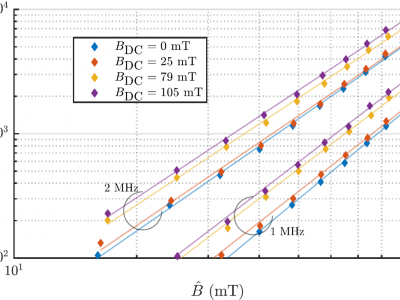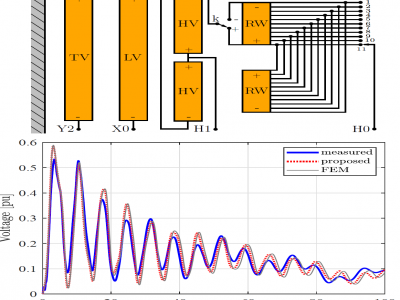Power and Energy
The dataset reflects a single household (home) power profile related to the grid. Households include typical appliances, two air-to-air heat pumps, a 3-phase 18 kW through-flow water heater, 6 kW solar panels and a 2,5 kW charger for the electric car.
For five-month (April_August) in 2022, every 0.2 sec took each 3-phase voltage and current measurement, calculate power and harmonics (up to 15th) for power profile registration.
Positive value reflects energy flow from the grid to a household, and negative values are energy flow to the grid.
- Categories:
 1332 Views
1332 Views
The dataset contains two industrial cases with measurement devices installed at the medium voltage bus entrance and at the target load to be identified. It can be used for the research of non-invasive load monitoring algorithms. The types of data measured include three-phase voltage, current, active power, reactive power, as well as the amplitude and phase angle of each harmonic.
- Categories:
 1690 Views
1690 ViewsThe code synthesizes a transfer function with real poles from tabulated frequency response data. The reproducible run of this capsule will synthesize the impedance matrix of a 500-kV double-circuit overhead power transmission line and also that of a 250-kV dc submarine power cable.
- Categories:
 170 Views
170 Views
Device fingerprinting is a technique for remote indirect identification or classification of a device of interest. This database is designated for device fingerprinting by current consumption; it includes current recordings for 22" computer displays from 40 devices - 20 Dell P2217H and 20 Dell E2214H. Two signals for each device were sampled independently and sequentially to provide independent train and test parts. Each sampled signal includes a 250-second recording at a 50kHz sampling frequency.
- Categories:
 214 Views
214 Views
Due to the range of battery capacities in different electric vehicles (EVs), wireless power transfer (WPT) systems need to have a large variation in the output power. Since conventional systems are usually designed for a custom specification, the power and efficiency may be significantly reduced due to the need for interoperability between ground assembly and vehicle assembly with different power ratings. To address this issue this paper proposes a DC-link parallel AC-link series (DPAS) multi-inverter multi-rectifier (MIMR) architecture for high-power WPT systems.
- Categories:
 113 Views
113 ViewsThis dataset aims to provide more insight into magnetic core losses at high frequency (MHz range) with superimposed DC bias in ferrites. The tested MnZn ferrite has a nominal relative permeability of 1500 (PC50) and 800 (PC200), which was tested at frequency from 500 kHz to 3 MHz. The DC bias appears to create a shift in the Steinmetz parameters, in particular the ki and β are affected the most. Higher DC bias creates higher losses gain and higher operating frequency makes the relative losses increase lower.
- Categories:
 207 Views
207 ViewsDesign information of a real 50 MVA power transformer is available in this dataport. In addition, transient measurements of 4 different configurations are included.
This material has been shared with the authorization of Prof. Alvaro Portillo (Task force leader of JWG A2/C4.52) and the WEG transformer factory.
We express our deepest gratitude to Prof. Alvaro Portillo and WEG for allowing the use of this information for academic and research purposes.
- Categories:
 463 Views
463 Views
Algorithms that adjust the reactive power injection of converter-connected RES to minimize losses may compromise the converters’ fault-ride-through capability. This can become crucial for the reliable operation of the distribution grids, as they could lose valuable resources to support grid voltage at the time they need them the most. This paper explores how two novel loss-minimizing algorithms can both achieve high reduction of the system losses during normal operation and remain connected to support the voltage during faults.
- Categories:
 300 Views
300 Views



